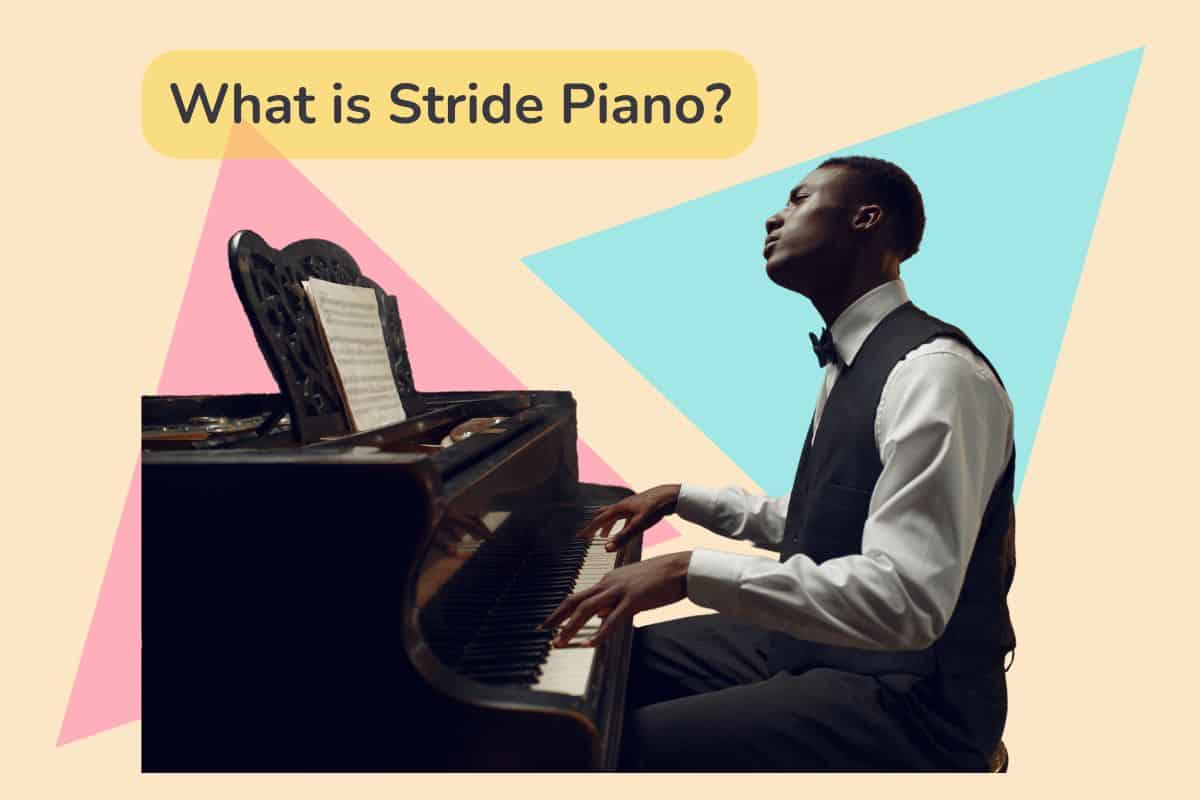If you’re new to the music scene and wonder which instrument is the most versatile and worth your while, you will be able to unlock the answer in this article.
For acoustic instruments, the most versatile would be the piano due to its large range, ability to play different styles and genres, and vast amount of sheet music. However, for digital, it would be a synthesizer as it can do the same things as a piano and also create its own new and unique sounds!

To learn more about the most versatile instruments, the differences between a piano and synthesizer, and which one you should pick for your needs, keep reading!
The Most Versatile Acoustic Instrument
If you’re looking for an acoustic instrument, then the piano is your best bet. It can be played in many styles and is excellent for beginners to learn to play a musical instrument. Here’s a short list as to why the piano beats every other type of instrument, hands down:
- Large range. Most brass, woodwind, or string instruments are developed for a specific pitch range. For example, the piccolo plays a much higher pitch than the bassoon. These instruments are usually restricted to only about three octaves, if that many, but the piano boasts seven octaves.
- Ease of playing chords. It’s effortless to play large four or five-note chords on the piano. This would be impossible to achieve on other instruments, like the violin, where playing two simultaneous notes is the limit.
- Range of sheet music. As the piano is such a commonly played instrument, you can find sheet music ranging from the classical era to transcriptions of most pop or rock songs.
- Polyphony. Other instruments can usually only play either a melody or a harmony at once. However, the piano will let you play intricate polyphonic pieces with multiple melodic lines — like a fugue — without requiring accompanying instruments.
A close second in versatility is the guitar. However, because the guitar doesn’t have such a long classical tradition and history and is more challenging to play than the piano, the piano wins.
If you ever plan to take on another instrument or learn more about music theory, learning the piano is ideal. It allows you to visualize harmonic connections easily by seeing the interactions between the treble and bass clef.
The Most Versatile Digital/Electronic Instrument
For many years now, digital and electronic instruments have been a driving force in music production. Nowadays, we are all familiar with the electric guitar, and you can now find electric string instruments like violin and cello, as well as digital wind instruments like the Aerophone. However, the one that really takes the versatility crown is the synthesizer.
Here are some features of the synth that make it so versatile that you might not know about:
Monophony/Polyphony
Synthesizers are either monophonic, polyphonic, or both.
Monophonic synthesizers only let the sound of one key ring out at a time, so if you hit two notes at once, it will only play the sound of one. Polyphonic synthesizers work as a regular keyboard would, but with a twist — there’s a limit to the number of voices they can hold. For example, if you have a synth with a four-voice polyphony and try to play a five-note chord, one of those will not sound out.
Tuning
Believe it or not, synthesizers need to be tuned! However, this means that you don’t have to stick to traditional Western pitches for notes. You can make some funky sounds that you wouldn’t be able to otherwise with different tunings.
Presets
A synth comes with various presets or programmed sounds you can experiment with when composing a melody or song. These can be percussive or melodic presets, but they all sound unique. Depending on the type of synth you buy, you can have hundreds of preset voices to play.
However, by far, the coolest thing about the synth that makes it the most versatile is the fact that you can create your own sounds. Starting from a specific range, the manufacturer will give you anywhere from 200 to 400 spaces to save different sounds that you can reuse in the future.
But how do you go about creating your own sound?
Making Your Own Sound on a Synth
When you start making your own sound, you begin with an oscillator that lets you choose the waveform. The waveform produces a specific pitch by looping the wave very fast, but depending on the type of wave you choose, a different tone is created.

The four basic waveforms are:
- Sine wave – Type of wave with an amplitude that oscillates uniformly. It produces a smooth sound and is the foundation for all the other waves.
- Square wave – As the name suggests, this waveform has a square-type shape. The sound it produces is often referred to as a hollow buzz and can be likened to reed-type instruments.
- Triangle wave – with its triangular shape, this waveform produces a sound somewhere in between a square and sine wave.
- Sawtooth wave – These have a distinct look of a saw and have an extra amount of ‘buzz’ to their sound.
If this sounds confusing to you, think of the difference between playing an A on the piano versus an A on the violin. The pitch is still the same, but the tone is different.
Depending on the type of wave that you pick, you can create different sounds that mimic real instruments. For instance, you can use a saw wave to create brass or string-like sounds. It doesn’t matter which instrument you play as a synthesizer lets you manipulate waves to produce whichever sound you like best.
You can change the shape of the sound and change the types of waves you use for different octaves to create an entirely novel sound. It’s also possible to add either white or black noise if you want to add some character. Unless you’re familiar with the synth, we bet you’ve never heard of adding black or white noise!
Here are some other effects that you should be using on a synth that will let it sound like every possible sound under the sun:
- Attack. When you play a note on the synth, it rings right away. The attack delays the sound and adds resonance before the full note rings out, like a string or woodwind section.
- Decay. Decay refers to the amount of time that you will need for the note to drop from the full volume to the sustain volume. When you press a key on the synth, it sounds loudly and then maintains a specific level of loudness afterward. Decay lets the sound drop a little bit before going to the sustained volume.
- Release. The release is used to determine how long the sound will linger. It’s a bit like the sustaining pedal on the piano, where the sound remains even after it’s been some time since you pressed the keys. The only difference is that release kicks into action once you take your fingers off the synth.
- Sustain. Sustain refers to the sound level that the note or key that you hold is sustained for.
You can also add a low-frequency oscillator (LFO) to introduce rhythm inside whichever sound you’ve decided to produce.
Some people might argue that the voice is the most versatile instrument — it has access to smaller tone changes that cannot be measured under the Western tuning system. However, the cool thing about the synth is that you can program it to sound like all the human voice variations, be it a tenor, bass, or a soprano.
Synths vs. Digital pianos
A synth is not a digital piano, although there might be some overlaps. The piano will usually come with the full seven-octave range (88 keys) and piano pedals. It will have a few preset sounds, but its primary focus is recreating the acoustic piano’s sound.
On the other hand, a synth is usually only three or four octaves, does not have pedals, and has an extensive database of many different types of sounds. Most modern pop or rock songs use the synth, and you can really hear its influence in the songs from the ’80s and ’90s.
Some digital keyboards crossover from synth to a piano that comes with some synth features, but it usually won’t be enough to create a unique sound. Therefore, in that regard, the synth is still more versatile than a digital keyboard.
However, it is possible to hook up a digital keyboard to the laptop using MIDI and then use online DAW software like GarageBand to produce the different sounds you want. Most digital pianos are weighted, so you can create dynamic changes in the sound that you produce.
The feature of using a synth as a MIDI controller is also available for most synths if you need to use it that way, so in the end, a synth will always be more versatile than a digital piano. Musicians on the go can also use small, one-octave, portable keyboards as MIDI controllers if they don’t need the full range of sound afforded by a digital piano.
These small MIDI controllers can then be hooked up to a bass system or any other electronic instrument that uses MIDI as a common language.
However, when getting your instrument, be sure to check if it uses the traditional MIDI cables or if it accepts USB. Try looking for a device that agrees with both, as you can connect it to a wide variety of instruments faster and more efficiently.
Conclusion
There are several contenders for the most versatile musical instrument, with worthy mentions going to the guitar, violin, and even the drums. These popular instruments are lightweight and flexible and have been played across many cultures. They have been incorporated into many styles of music, from folk, Celtic, and gypsy, to name but a few.
However, I genuinely believe that because of its wide range of music it can produce, the piano wins the acoustic battle for almost any occasion. But if you’re looking for something that can take sound and music to another level, then the synthesizer will be hard to beat.



